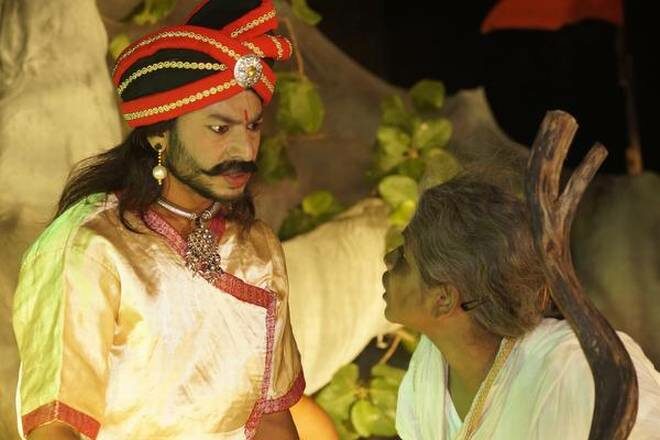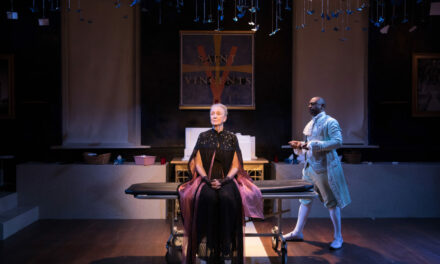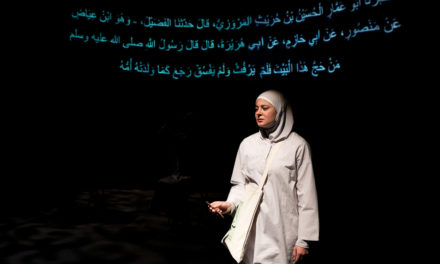Staged at the 20th Bharat Rang Mahotsav, Buxi Jagabandhu showcased the heroic resistance of Odia people against the East India Company.
It was heartening to watch Buxi Jagabandhu, one of the celebrated plays of Manoranjan Das, an eminent literary figure of Odisha, at the ongoing 20th Bharat Rang Mahotsav. The Odia production was presented by Dynamic Platform, from Bhubaneshwar, at the Kamani auditorium.
Artistically impressive, the play glorifies heroic resistance of Odia people against the East India Company’s predatory wars, exploiting the greedy and mutually hostile feudal chiefs, making them its allies and defeated patriotic forces.
Set in 1817, the play depicts the great Paika Rebellion which is led by Buxi Jagabandhu, the commander of the forces of the King of Khordha. The East India Company is led by Colonel Harkot. Resorting to its perfidious tactics, the Company manages to bring one of the rulers of the state into its fold which enables the arrest of King Mukunda Dev II. The king’s generals do not surrender and a fierce battle ensues, resulting in the victory of the Company.
In the face of defeat, Buxi Jagabandhu takes over the leadership of a defeated people. He organizes the scattered and demoralized forces and youth and gives them rigorous training in guerilla warfare. Buxi has developed the skill to fight in the dense forest as well as to attack from deep water. He trained his men in indigenous warfare like shooting arrows from trees with a bow. He and his army fight heroically against a superior force equipped with powerful weapons assisted by traitors who fight against their own people.
Youthful vision
The play is directed by Debabrata Pattanayak, a postgraduate in drama (direction) from the Utakal University of Culture, Odisha, who has undergone training under Rudra Prasad Sengupta, Satyabrat Rout and Subodh Patnaik.
His youthful vision and understanding of theatrical craft are very much evident in his production under review. He has explored the space horizontally and vertically to create the illusion of a vast mountainous landscape where war is fought. On the left-center stage, there is space for Odia forces and its people.
The space in the right-center is shown as under the control of the East India Company. The decisive battle takes place downstage. This design by Pranjyadutta Sahoo enables the audience to view the dramatic action, which flows uninterruptedly, with clarity.
Most of the characters are historical. To add some romantic color and show the sacrifice of true love in the cause of freedom, the playwright has conceived a female character, a young and beautiful girl, who loves Buxi Jagabandhu because he is a fighter and loves freedom. When King Dev II is arrested by the Company, his minister Jai Rajguri is killed while fighting the aggressor. Buxi is obsessed with the gnawing sense of defeat. She inspires him to fulfill his historic role as a hero to defeat the enemy. This creative element is revealed in a fantasy sequence, capturing the romantic aura that transforms Buxi as he awakens from his depressed state of mind. The same female character sacrifices herself for the sake of the motherland. The director has aptly projected two traitors as caricatures who meet their end at the hand of patriotic forces.
Thrilling martial arts
One of the highlights of the production is the way war scenes are conceptualized. These scenes are choreographed on the pattern of Raiku Nrutya of Khondha martial artform of Odisha. These scenes impart vitality to the production and offer moments of thrilling visuals. Music score by Pratap Chandra Rout is drawn from the folk music of Odisha, which is aptly used to reinforce action and leaves an emotional impact on the audience.
In the lead role of Buxi Jagabandhu, Udit Guru Mohapatra gives a brilliant performance, imparting to his portrait a great deal of martial force and commitment to the cause of the freedom of the motherland. Saunika Sahu as the young woman in love with Buxi Jagabandhu blends her portrayal with boldness, tender romantic sensibility, and patriotic fervor. In fact, the large cast gives creditable performances, giving momentum to the action to move to the climax with intensity.
This article appeared in The Hindu on February 15, 2019, and has been reposted with permission.
This post was written by the author in their personal capacity.The opinions expressed in this article are the author’s own and do not reflect the view of The Theatre Times, their staff or collaborators.
This post was written by Diwan Singh Bajeli.
The views expressed here belong to the author and do not necessarily reflect our views and opinions.


















